Since I recently wrote a review for a new NY Meyer (2019) alto saxophone mouthpiece as well as a vintage NY Meyer (1960’s) alto saxophone mouthpiece, I thought it would be interesting to do a side by side review of these two great alto saxophone mouthpieces side by side.
These are from the “mouthpiece fun box” that Jimmy Jensen at Tenor Madness sent me with interesting and great mouthpieces he thought I would like to check out. Both of these alto mouthpieces have both been refaced by Jimmy. The vintage NY Meyer alto sax mouthpiece is refaced to a .071 and the new NY Meyer alto saxophone mouthpiece is refaced to a .074. Being that both alto mouthpieces have been refaced by the Jimmy Jensen and there is only a .003 difference in tip openings between each mouthpiece, I thought they would be good to compare to each other.
Side by Side-New NY Meyer on Left. Vintage NY Meyer on Right
I already anticipate some of you complaining that these are not original Meyer mouthpieces, and to do the comparison accurately, I would need original Meyer mouthpieces to compare. The truth is that even with original mouthpieces there are differences between each mouthpiece of the same model. I believe these two NY Meyer mouthpieces still retain the qualities that are consistent with each of the models as far as sound and tone and are worthy of comparison.
I talked to Jimmy Jensen about these two mouthpieces and this is what he said about his work and refacing on them:
I’ve acquired facing measurements off of hundreds, possibly thousands of vintage pieces at this point. I save my favorite curves and put those on my pieces. So my vintage NY USA, I took the facing measurements from and I’ve kept those true, just opened the tip because it was .067 stock. On the new one I put the same facing numbers and table style on it as the vintage ones. Essentially it’s what I would expect to see on an untouched vintage NY USA Meyer.
As far as vintage pieces, there’s going to be variance no matter what. Rubber warps over time, you get dings, I rarely like a completely stock vintage piece. Usually they need just a tiny bit of freshening up. And I’m a minimalist in my facing. I try to keep them as close to stock as possible, but playing well-Jimmy Jensen
I have posted photos throughout this review of the new NY Meyer mouthpiece next to the vintage NY Meyer mouthpiece so that you can see how each mouthpiece looks and compares physically.
The mouthpieces look pretty similar on first glance. Of course, the vintage NY Meyer mouthpiece is more faded and not as shiny as the new NY Meyer mouthpiece. The new NY Meyer body looks slightly larger in diameter than the vintage Meyer body. The beak also looks slightly thicker on the new mouthpiece from above but it is so close that I’m not 100% confident that I am correct. From the side, the new NY Meyer mouthpiece beak also looks a tad bit thicker than the vintage NY Meyer mouthpiece.
New NY Meyer Alto Mouthpiece Refaced By Jimmy Jensen to a .074 Tip Opening
Vintage NY Meyer Alto Mouthpiece Refaced By Jimmy Jensen to a .071 Tip Opening
Next are the table comparisons. Both alto sax mouthpieces have been refaced as I mentioned above. The refacing process does affect the table but I will still write about what I see. The vintage NY Meyer mouthpiece has a thinner table than the new NY Meyer mouthpiece. It also looks like the window opening is slightly wider on the new NY Meyer alto sax mouthpiece than on the vintage NY Meyer mouthpiece. Both tables look to be the same length and both sax mouthpieces as a whole look to be the same length.
The engraving on the shank of the vintage NY Meyer mouthpiece has “New York USA” on the top of the shank and on the bottom is engraved “medium chamber”. The new NY Meyer alto mouthpiece has “Made in USA” on the top of the shank and “NEW YORK” on the bottom. The new NY Meyer also has a serial number engraved on the right side of the body as you look at it from the table side of the mouthpiece.
New NY Meyer Alto Mouthpiece Refaced By Jimmy Jensen to a .074 Tip Opening
Vintage NY Meyer Alto Mouthpiece Refaced By Jimmy Jensen to a .071 Tip Opening
The baffle areas of both NY Meyer mouthpieces look very similar to my eye. I think the baffle on the new NY Meyer is slightly wider than the vintage model but the rollover and angle of descent down into the chamber looks almost identical. The vintage NY Meyer mouthpiece might have a slightly more gradual curve of the baffle but it is hard to tell by eye. They both look very similar.
New NY Meyer Alto Mouthpiece Refaced By Jimmy Jensen to a .074 Tip Opening
Vintage NY Meyer Alto Mouthpiece Refaced By Jimmy Jensen to a .071 Tip Opening
The tip rails and beginning of the baffle on each NY Meyer alto sax mouthpiece also look almost identical. I can’t see any difference at all with my eye. This exact similarity is probably due to Jimmy Jensen’s preferences in refacing tip rails and the baffle area.
The mouthpiece chambers are where I see the biggest difference between these two NY Meyer alto mouthpieces. As you can clearly see in the pictures below, the new NY Meyer mouthpiece has a thinner roof to the chamber and a deeper cavity at the bottom of the chamber than the vintage NY Link alto mouthpiece. This makes the chamber of the new NY Meyer mouthpiece larger than the vintage NY Meyer mouthpiece.
I’ll get into the differences in sound and playability below but I will say that, in general, I preferred the focus and core sound of the vintage NY Meyer mouthpiece over the fatter more spread tone of the new NY Meyer alto sax mouthpieces. If I had to guess at the reason for this difference, I would guess that it is the difference in mouthpiece chamber size and shape.
Since these alto mouthpieces are only .003 difference in tip opening and the baffles look pretty identical next to each other, I would guess that this difference can be attributed to the chambers. The smaller more round chamber of the vintage Meyer mouthpiece keeps the sound focused while the larger chamber of the new NY Meyer mouthpiece fattens and spreads the sound more. This is my opinion anyways……..
New NY Meyer Alto Mouthpiece Refaced By Jimmy Jensen to a .074 Tip Opening
Vintage NY Meyer Alto Mouthpiece Refaced By Jimmy Jensen to a .071 Tip Opening
I have provided two sound clips of both NY Meyer alto sax mouthpieces below. One is a new clip of the new NY Meyer alto saxophone mouthpiece refaced by Jimmy Jensen that I haven’t recorded or released until now.
The other clip is of the vintage NY Meyer alto sax mouthpiece that I used in the original review of that sax mouthpiece. I actually recorded the two clips one after the other so there is a lot of similar material in each sound clip. The same Woodstone 3 1/2 reed and Sumner Acousticut metal alto sax ligature was used on both mouthpieces to avoid any reed and ligature changes in sound.
Both clips were recorded in the exact same location with the exact same equipment and settings.
Here are some specific spots to listen for in the two recordings for comparison purposes:
- In track 1 of the new NY Meyer mouthpiece, I play Phil Woods solo on “The Summer Knows” at :21-1:37 of the recording. On track 2 of the vintage NY Meyer mouthpiece, I play the same exact solo at 2:10-3:30.
- I also play the melody to “If I Should Lose You” on both tracks. On track 1 of the new NY Meyer I play it at 2:20-2:36 and on track 2 of the vintage NY Meyer I play it at 3:57-4:24
The difference in sound and tone I heard while playing and the listening to the tracks are these:
- I felt like the new NY Meyer mouthpiece had a more spread and fat alto sax sound than the more focused sound of the vintage NY Meyer alto mouthpiece.
- The new NY Meyer mouthpiece sounded more brash and in your face. The vintage NY Meyer mouthpiece sounded sweeter and more delicate. The new NY Meyer mouthpiece sounded more aggressive and the vintage NY Meyer mouthpiece sounded more polite to me.
- The new NY Meyer mouthpiece was definitely more free blowing and the vintage NY Meyer had a little bit more resistance to work with. Using the same reed really helped me feel this as it felt slightly softer on the new NY Meyer than it did on the vintage NY Meyer.
- The high register on the new NY Meyer mouthpiece sounded brighter and had a bit of edge to it while the vintage NY Meyer mouthpiece sounded darker and prettier to me.
- Lastly, I think the more fat and spread tone of the new NY Meyer mouthpiece made the fast runs sound as if the individual notes were kind of bleeding together in sound making it sound less distinct and clear to my ear. The focus of the vintage NY Meyer mouthpiece made the fast runs sound more clean and precise to my ear. It’s almost like I could hear each separate note as it’s own voice even though I was playing fast runs and licks.
In the end, I think the new NY Meyer is a great alto mouthpiece. I have played five up to this point and all five played great for me. I also loved the vintage Meyer NY mouthpiece as was evident from my review I posted earlier. Both mouthpieces had qualities that I enjoyed and liked while playing them and listening back to the recordings.
Although I totally loved the vintage NY Meyer alto mouthpiece, I wonder if the extra fatness, brightness and edge of the new NY Meyer might make it an alto sax mouthpiece the would cut through in the mix of a big band or modern band with amps and electronic instruments easier than the vintage NY Meyer alto mouthpiece. I can’t answer that without playing in a live situation with both mouthpieces though. Jimmy Jensen has played both of these alto sax mouthpieces so maybe he can answer that question in more detail…….
I will say, that I would be the first in line if JJ Babbitt made another version of this new NY Meyer mouthpiece with a slightly smaller chamber like the medium chamber of the vintage NY Meyer mouthpiece in this review. I think the added focus and sweetness to the tone that is in the vintage NY Meyer is a really attractive quality to have in an alto sax mouthpiece.
These are some of my own observations from playing these two mouthpieces and listening to the clips afterwards. Feel free to listen to the clips below and let me know what you think in the comments below. Thanks, Steve
New NY Meyer Alto Mouthpiece Refaced By Jimmy Jensen to a .074 Tip Opening-Ishimori Woodstone 3 1/2 Reed
Vintage NY Meyer Alto Mouthpiece Refaced By Jimmy Jensen to a .071 Tip Opening-Ishimori Woodstone 3 1/2 Reed


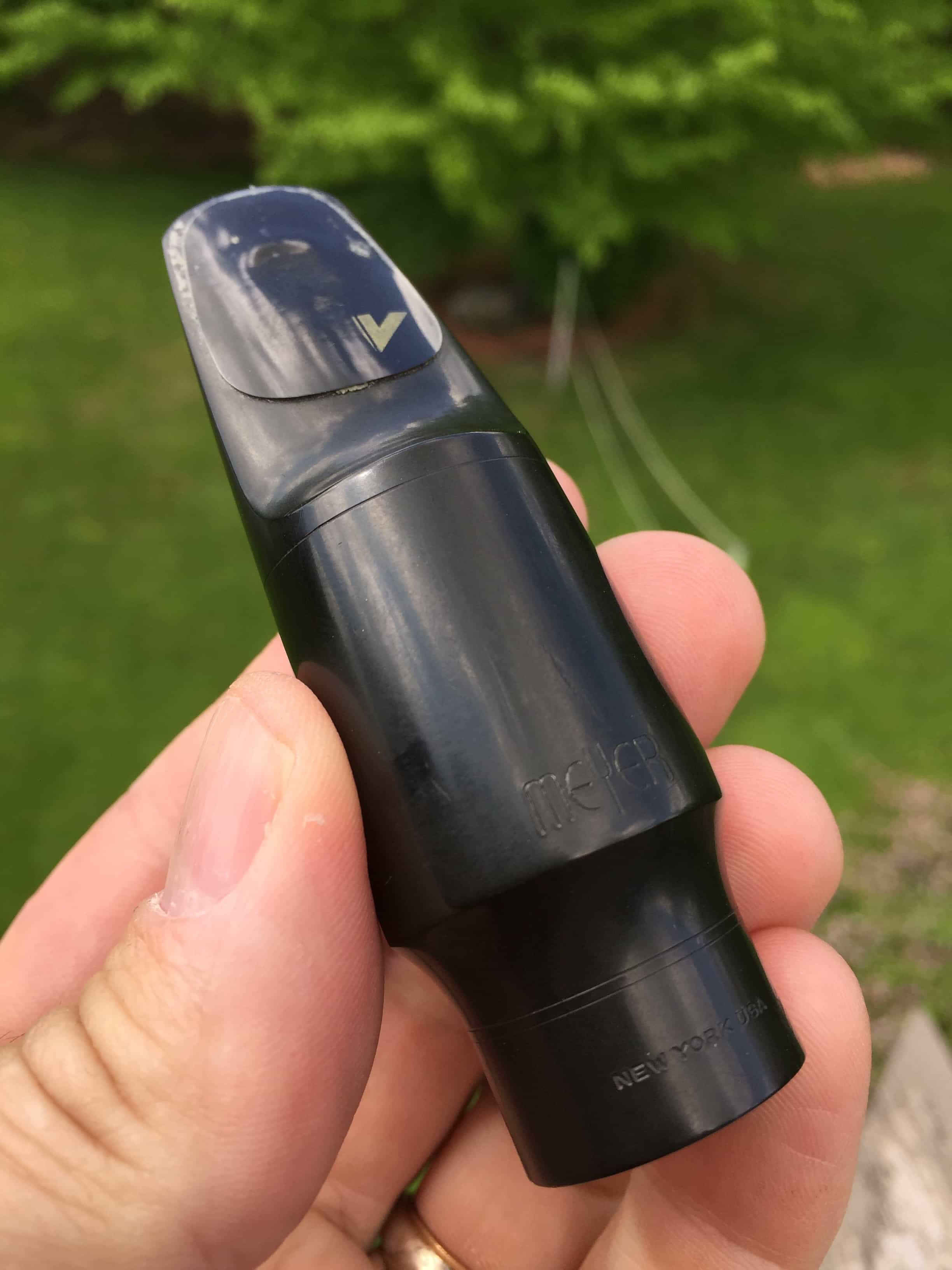

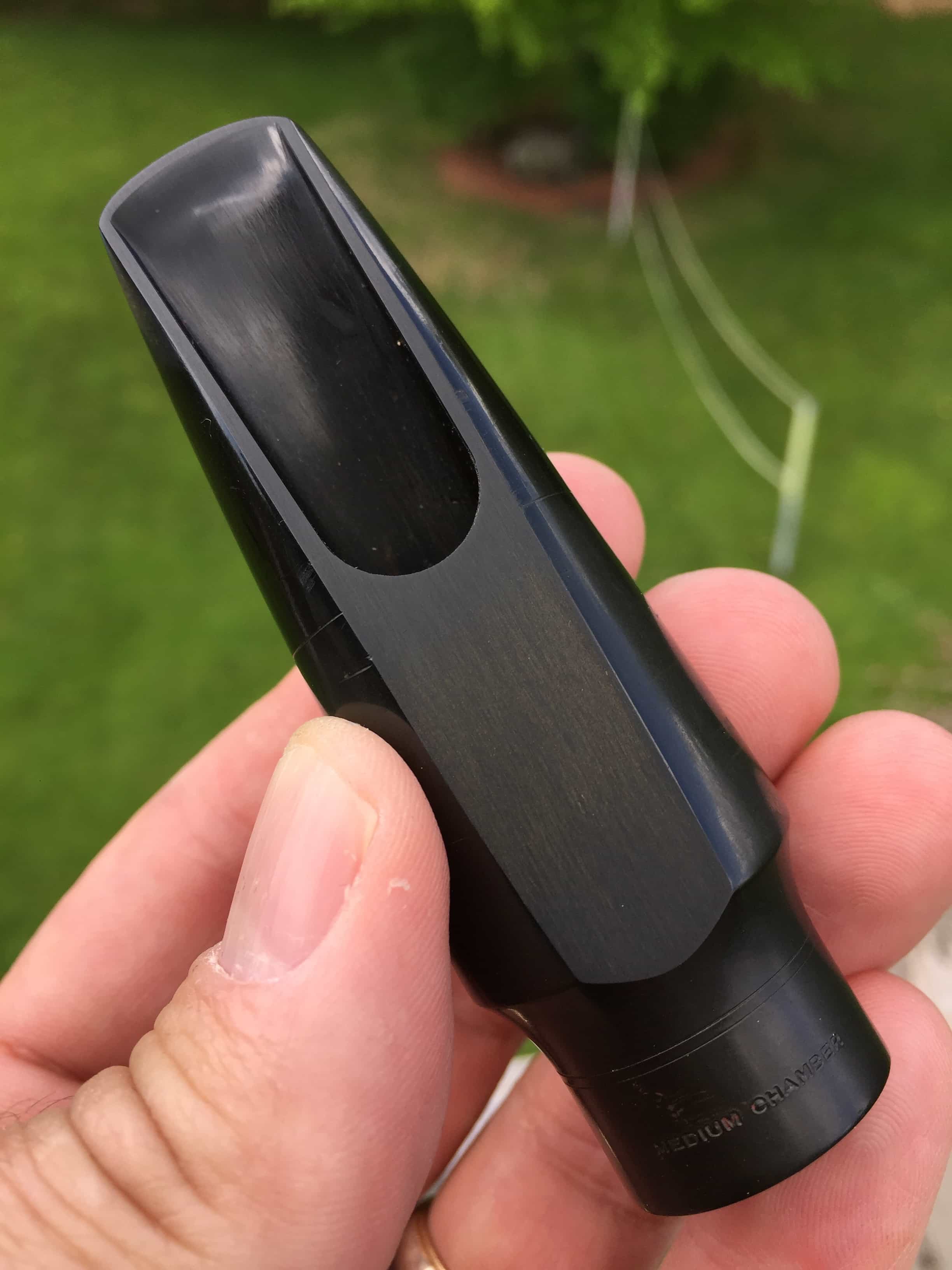
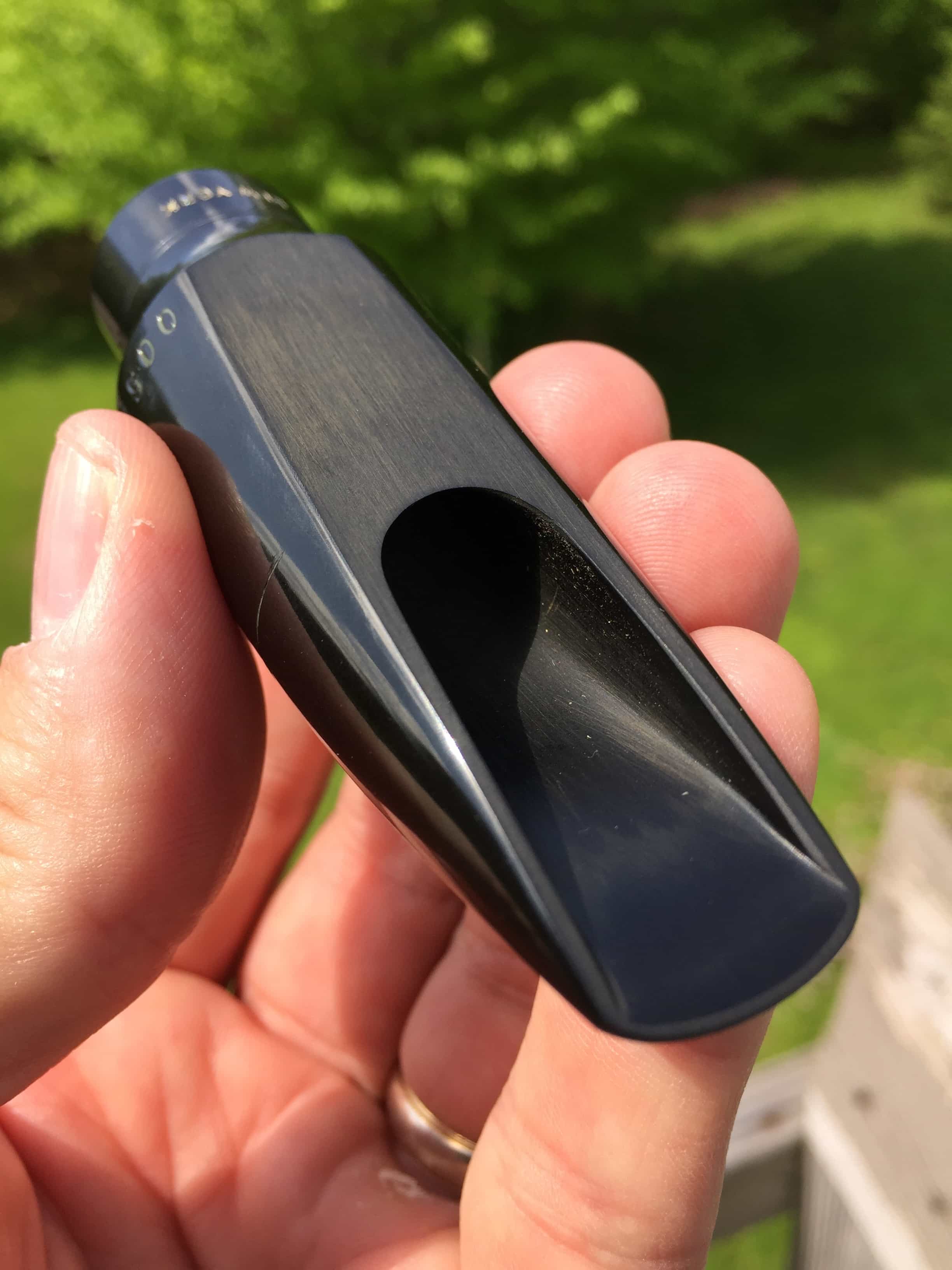
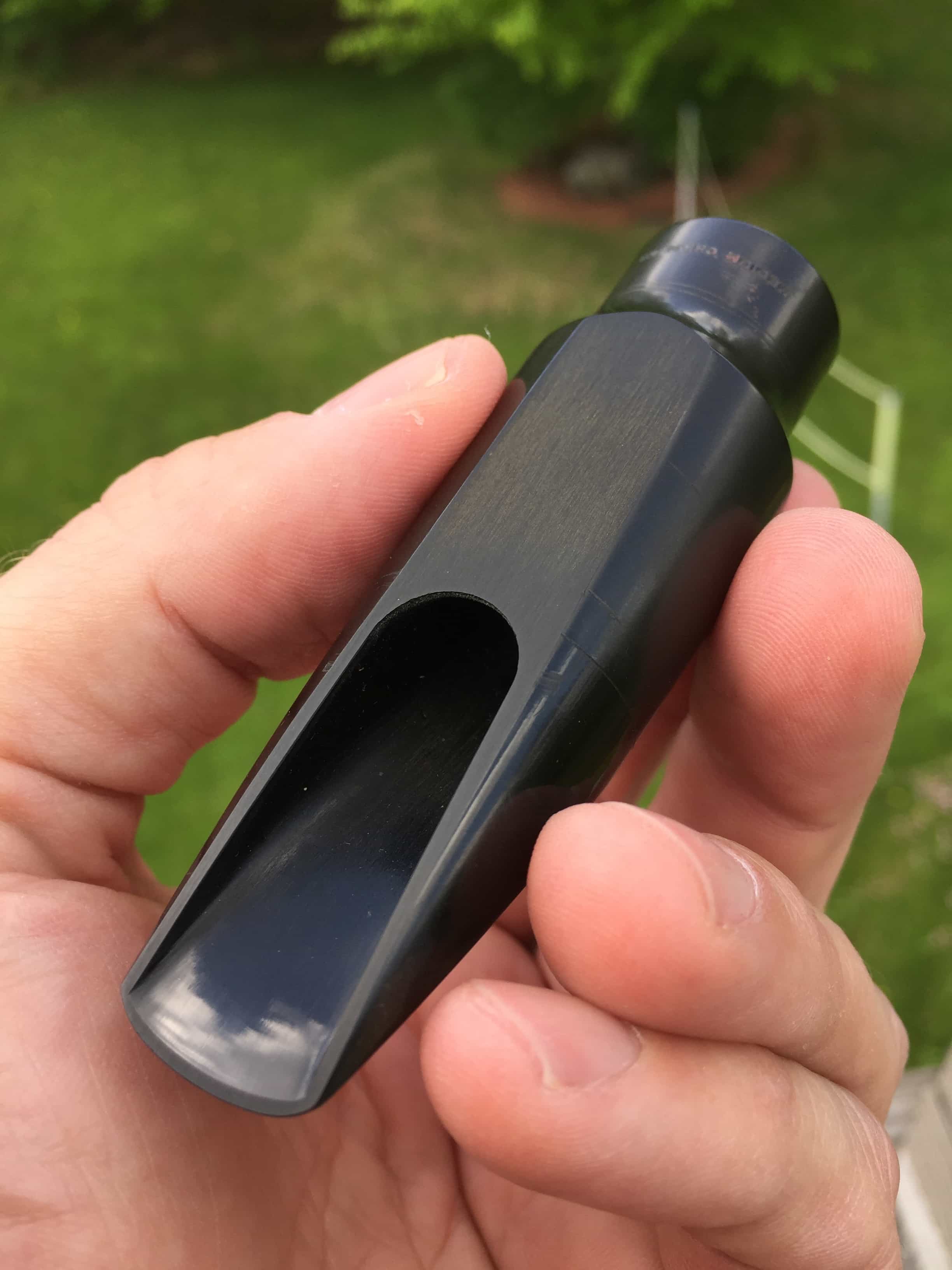


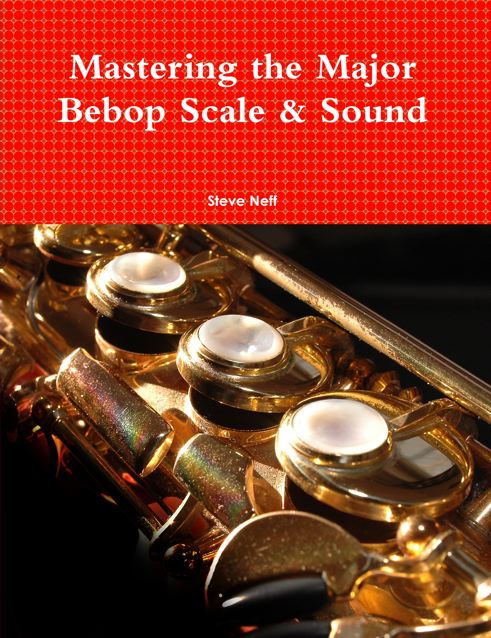


Sounds great. I hear a little more buzz in the vintage piece. I like them both!
I like the sound of the original NY Meyer. The new one sounds good, but just a little more modern to me. I like the core sound of the old one better. I think that both would be useful depending on the circumstances you are using them for. Another thing I think is that the old mouthpieces were made of a different composition of hard rubber than the new and that has something to do with the sound. Doug Henry
They’re completely different, both great. I like the vintage NY USA quite a bit more. More depth and richness to the sound.
I listened to the first track of the New NY Meyer and enjoyed it. I listened to the first 3 notes of the Vintage and melted in pure joy.
What would the difference have been if neither of the mouthpieces had been refaced…
THAT is a comparison I’d like to hear…
In other words, HOW does the new NY sound “out of the box”??? Compared to a Vintage NY that’s NOT refaced…
I have already reviewed two new “out of the box” untouched NY Meyers. http://www.neffmusic.com/blog/2019/05/ny-meyer-100th-anniversary-model-alto-saxophone-mouthpiece-review/
Steve…
Thanks… that, at least, shows me that “out of the box” Meyers “work”…
You know what I mean… there are some manufacturers out there that you NEED to reface to get to work properly…
Alto, however, isn’t my “problem horn”…
Am in the process, waiting for Vandoren, to get their complete line of V16’s into their Musician’s Studio… looking to get smaller than my .155 or 9*’s…
Gettin’ old… and did a 2-hour show, with at least 3 chorus’s each song… my chops BEGGED me to make it smaller… lol
Thanks, for showing me your Review of 100th Anniversary Myers..
Pat
Pat, Someone on Facebook also said that this review was useless because the mouthpieces had been refaced. Here is my response:
I disagree. Like I said in the review, even if I did have two original mouthpieces to review, there are such variances between mouthpieces from the factory that some would say the mouthpiece is a great example or some would say it is a poor example. At least with the reface we know there is a good curve on both. I have a review of two off the shelf new NY Meyers also if anyone is interested in the sound of the original mouthpieces. http://www.neffmusic.com/blog/2019/05/ny-meyer-100th-anniversary-model-alto-saxophone-mouthpiece-review/
Also, I have probably had more mouthpieces refaced than anyone and although a reface can do great things to a mouthpiece that has issues or a poor facing curve. Every Meyer or Link I send out still comes back sounding like a Meyer or Link. I might dare say that the difference might be equal to the difference between who ends up working in the factory the day an original Meyer or Link is made. I have played plenty of the same original models that were totally different. So in my mind, we know that Jimmy put a great curve on both and from there we can judge the mouthpieces fairly between them based on how they play and their sound. If I took 10 vintage NY Meyers and 10 Modern NY Meyers I wouldn’t be surprised if I got a variety of facing curve numbers back from those 20 mouthpieces. Not to mention different table concavities. These pieces have been refaced so we know or can assume the tables are flat and the facing curves are good. Now we can compare them by how they play and sound………
I guess I’m just a lucky man…
At the making of almost all of my mouthpiece, I was present with the maker (or were made to my spec’s)…
Exceptions Berg 130/0 offset M, 10mFan 9* Merlot, Vandoren V16A8s… my “store bought” mouthpieces… although wouldn’t consider the Merlot “store bought”…
My question about the New NY was could I get one off the shelf, and play it… (knowing that I’d want/have to play more than one)… as I did my Vandoren… at their Musician’s Studio…
And, yes, I have heard that there are some manufacturers out there putting out Crap Mouthpieces… that HAVE to be worked on to play…
What happened to going out… telling the salesman what you wanted… opening up a couple of boxes to find the “one” you liked.. and buying it…
P.S. I don’t agree with the guy on Facebook that your review “useless”… I found it VERY informative… especially the difference between the two different styles…
If he didn’t hear that… oh, well… 🙂
To all who feel the comparison isn’t valid because these pieces have been refaced, I messaged Jimmy Jensen this morning to get more info on his outlook on refacing. This is what he said:
I’ve acquired facing measurements off of hundreds, possibly thousands of vintage pieces at this point. I save my favorite curves and put those on my pieces. So my vintage NY USA, I took the facing measurements from and I’ve kept those true, just opened the tip because it was .067 stock.
On the new one I put the same facing numbers and table style on it as the vintage ones.
Essentially it’s what I would expect to see on an untouched NY USA
As far as vintage pieces, there’s going to be variance no matter what. Rubber warps over time, you get dings, I rarely like a completely stock vintage piece. Usually they need just a tiny bit of freshening up. And I’m a minimalist in my facing. I try to keep them as close to stock as possible, but playing well-Jimmy Jensen
I enjoy the Vintage Meyers piece , the tone of thr mouthpiece was great
The NY gets my vote. Fatter sound. I’m not fond of the sweet, dare a I say old fashioned, alto sound.
Both played beautifully Steve.
Steve, try out Ed Pillinger’s mouthpieces. His Meyer style alto is based in a 1950 Meyer, is very good and at £200, much the same retail price as the new NY Meyer. He also makes an LA with a bigger chamber and a mouthpiece of the same design as Parker’s.
I prefered the newer NY meyer. It had “that” sound. maybe the larger 074″ tip (meyer 6) .076″ was why,
instead of the 071″ tip (Meyer 5 ). This comparison was like comparing apples to oranges. because of the difference in tip openings. I noticed that both mouthpieces sounded great and you could totally use any of these for big band lead alto. I own 4 meyers, three 7MM’s and one 6MM, and these sounded so great I’m dying to try out a New NY 7MM.
Once again Thanks Steve for your fantastic mouthpiece reviews!!!
King Koeller
Both great sounding pieces and I can easily be happy with either!!! To me there’s only 1 real question…Is the approximate 10 times price difference for the vintage piece be worth the difference in sound, performance, feel, etc.? From what I heard between the 2 recordings, I couldn’t justify the cost difference for myself – again, just speaking for myself!
Also, replacing a vintage piece with yet another vintage piece doesn’t seem to be cost effective – replacing the newer piece would be.
Again, their both great sounding pieces. If the cost difference is worth it, then it’s worth it – if it’s not, then it’s not. In either scenario, the sound is there…Thank you Steve for the demo. I’m glad I came across this.
I like best the new Meyer.
Giuseppe.
One of my favorite alto saxophonists is Jackie McLean; the fat and edgy sound of the new Meyer reminds me of the beautiful sound, which I like so much, that McLean has on the Prestige “Contour” album: A foggy day, Kerplunk, Inding, Lights out, Up, Lorraine, Sentimental journey, Why was I born ?, Contour, Confirmation, When I fall in love, Abstraction … Recordings from 1956.
Steve, do you have any observations as to how the 2019 JJ. Babbitt NY Meyer compares to the Drake Phil Woods? As in, does the Drake Phil Woods more closely align with the original NY Meyer, with the 2019 version, or neither? Any other observations would be appreciated as well. I currently have a 1993 Meyer 7 on my 66xxx Mark VI alto (I also have a Vandoren A7, but the 1993 Meyer is a better fit for it). Note: I played the Drake Pete Christlieb on my Mark VI tenor. Thanks.
I have only played two or three old Meyers and they all played different from each other so it is hard to answer that question. In this review you are commenting on I go into detail on the differences between these two mouthpieces. I say the new NY Meyer is fatter and not as focused as the old NY Meyer and the Phil Woods is more focused. I think I remember the Phil Woods piece as being brighter but I didn’t play them next to each other so I don’t know for sure. The difference in brightness might be because of the material the pieces are made of but that is just a subjective opinion and many people believe material does not matter.